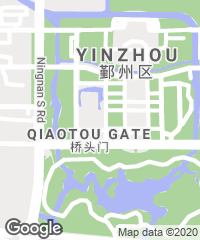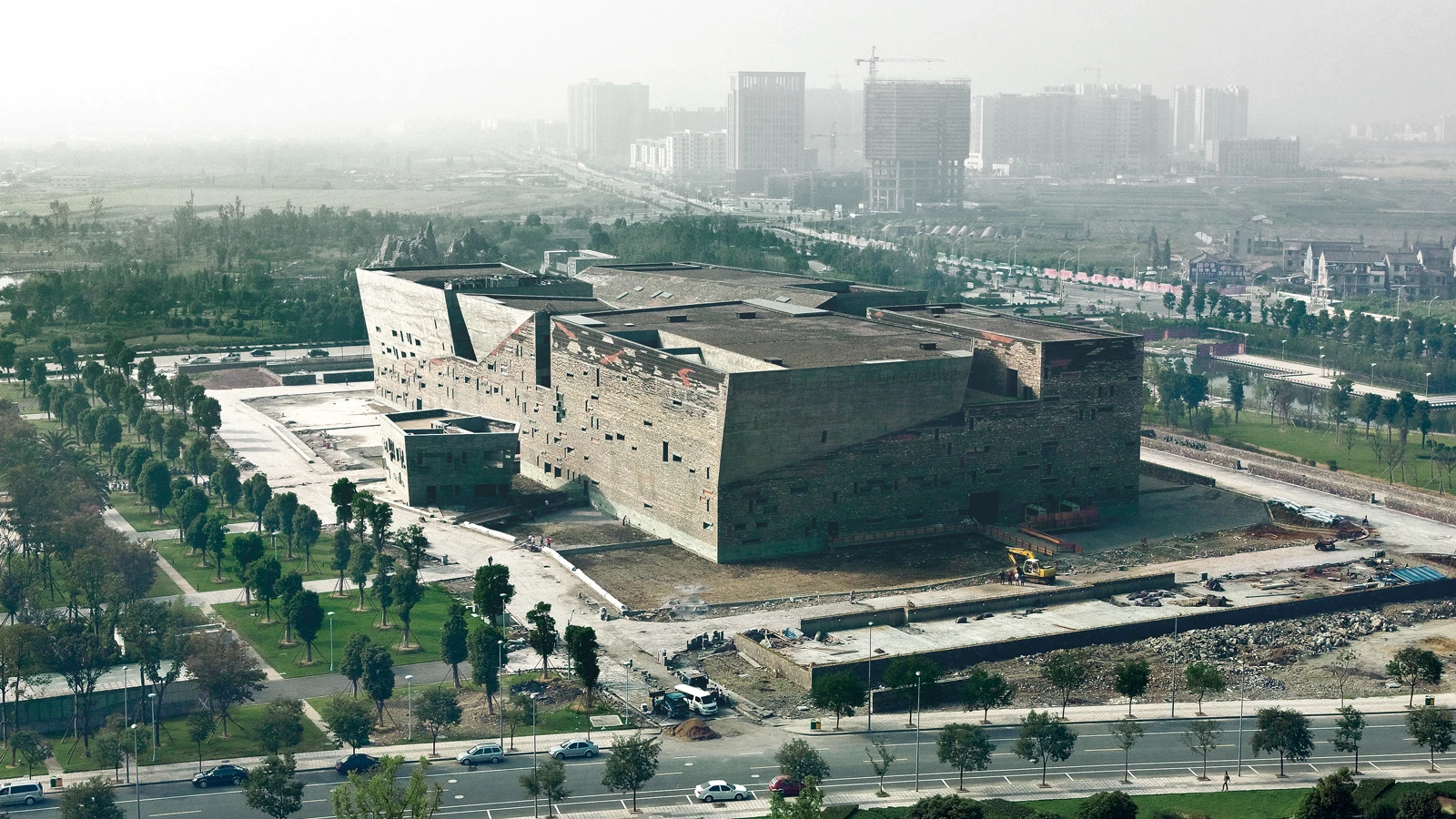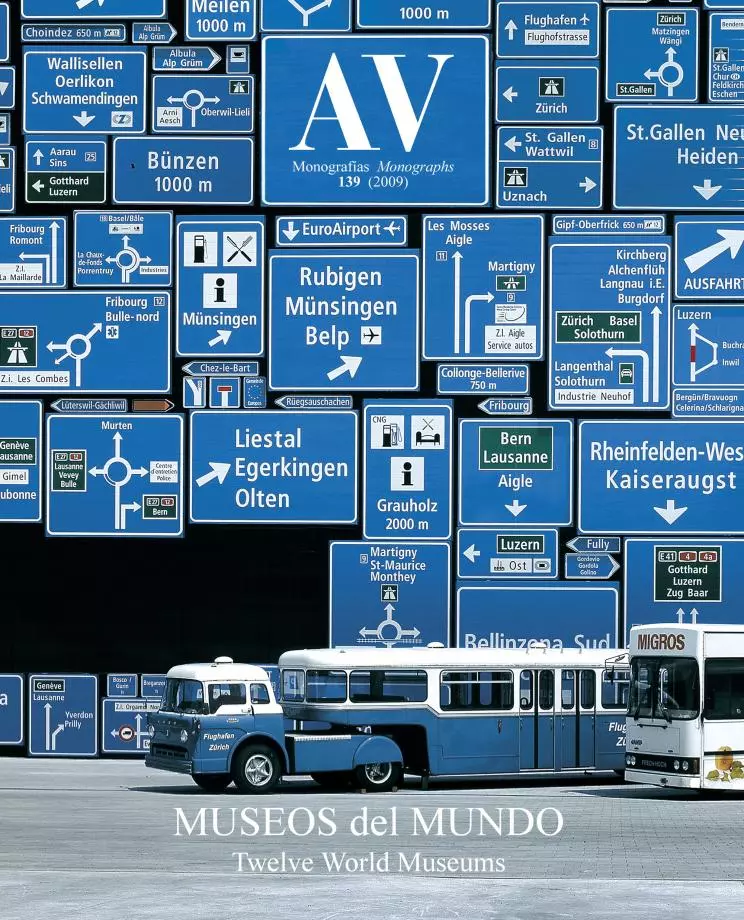History Museum in Ningbo
Amateur Architecture Studio- Type Culture / Leisure Museum
- City Ningbo
- Country China
- Photograph Iwan Baan


The museum is a bold three-story block located on the northwestern edge of a huge empty plaza in Yinzhou, a blooming district on the outskirts of the southern Chinese city of Ningbo. The building, which takes the nearby mountains as inspiration to trace its broken profile and to organize the 30,000 square meters of interior spaces, rises on rice fields that over the years have turned fallow as a result of urbanization.
The new archaeological museum is a solid volume of ceramic and concrete surrounded by a layer of water with boulders and pierced by a large wooden ramp that allows crossing the building without actually going inside it. This outdoor public space, with breakout spaces for visitors, takes on a dramatic character due to the light slope with the respect to the vertical line of the facades which, measuring up to 24 meters in height, offer visitors surprising views. The center of the complex, on the contrary, is occupied by a serene rectangular courtyard covered with glass profiles in greenish hues, whose reflecting and satiny skin contrasts with the impregnable exterior enclosures.
The surface of these facades is, in fact, one of the most characteristic elements of the project. The desire to establish a coherence between the exterior and the interior, between content and containers, encourages the studio to transcribe the purpose of the museum – to custody the memory of the region – onto the enclosure, with a random pattern made with pieces recovered from nearby constructions. The technique is borrowed from what is known in the area as wapan tiling, a tradition of emergency building in the wake of a typhoon, taking pieces salvaged from destruction to build heterogeneous facades, coated, in this case, with over twenty varieties of gray- and red-colored bricks and roof tiles.
These fragments stand alongside reinforced concrete formworks on uneven bamboo surfaces. The imperfection and random character of the facades, for which several mock-ups carried out by local craftsmen had to be made, is due to the fact that the workers had no means of controlling the portions of the different materials, and also to the constant supervision of the project managers. The deliberately random positioning of the small rectangular windows, which give no information whatsoever about the building’s interior spaces and contents, further contributes to the erratic irregular effect of the object as a whole.
Cliente Client
Museo de Ningbo. Gobierno Municipal de Ningbo?
Arquitectos Architects
Amateur Architecture Studio: Wang Shu, Lu Wenyu Colaboradores?Collaborators Song Shuhua, Jiang Weihua, Chen Lichao; Architectural Construction Research Institute; Architecture & Landscape Research Institute; China Academy of Art
Consultores Consultants
Shentu Tuanbing, Chen Yongbing (proyecto de estructuras structural design); Ningbo Yinzhou Urban Investment & Construction: Hu Jun, Lin Mi (supervisión de obra construction supervision)
Contratista Contractor
Zhejiang Second Construction Group: Wu Qingbing (gestión de obra construction manager); Ni Liangfu (director foreman)
Fotos Photos
Iwan Baan







